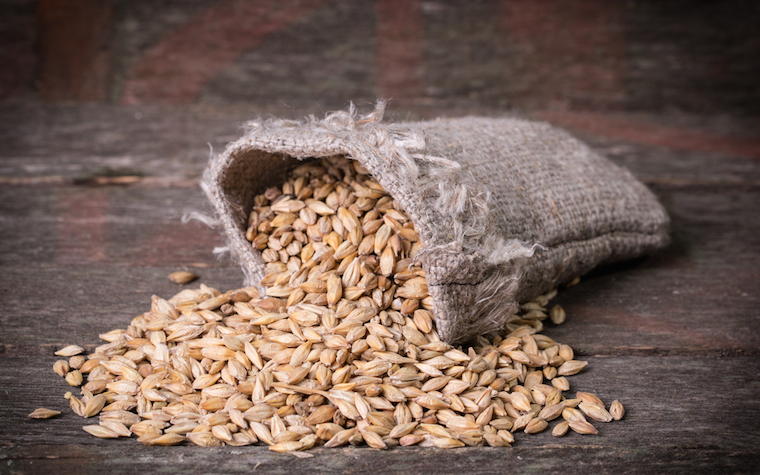U.S. Department of Agriculture Agricultural Research Services
U.S. Government: Agencies/Departments/Divisions | Federal Agencies
Recent News About U.S. Department of Agriculture Agricultural Research Services
-
Honey Bees More Faithful to Their Flower Patches Than Bumble Bees
Honey bees are more faithful to their flower patches than bumble bees when it comes to returning to collect more pollen and nectar, according to a study by U.S. Department of Agriculture Agricultural Research Service scientists.
-
Old Bulls Bring New Genetic Benefits To Light
Animal genetics plays a crucial role in modern agriculture, enhancing food sustainability, and animal adaptation to a changing climate.
-
Varroa Mites and Deformed Wing Virus Make Honeybees More Susceptible to Insecticides
Controlling for Varroa mites, the parasitic mites that feed on honey bees and serve as vectors for viral diseases like deformed wing virus (DWV)
-
Completing Genome of Rusty Patched Bumble Bee May Offer New Approach to Saving Endangered Bee
A detailed, high-resolution map of the rusty patched bumble bee's genome has been released by U.S. Department of Agriculture (USDA) Agricultural Research Service (ARS) and U.S. Fish and Wildlife Service (USFWS) scientists, offering approaches for bringing the native pollinator back from the danger of extinction.
-
Producers Can Now Go "Whole Hog" on New Heat Stress App for Pigs
HotHog, a new smartphone application ("app") that predicts heat stress in pigs, is now available for download and use, a team of Agricultural Research Service (ARS) and university scientists announced today.
-
Varroa Mites and Deformed Wing Virus Make Honeybees More Susceptible to Insecticides
Controlling for Varroa mites, the parasitic mites that feed on honey bees and serve as vectors for viral diseases like deformed wing virus (DWV)
-
Completing Genome of Rusty Patched Bumble Bee May Offer New Approach to Saving Endangered Bee
A detailed, high-resolution map of the rusty patched bumble bee's genome has been released by U.S. Department of Agriculture (USDA) Agricultural Research Service (ARS) and U.S. Fish and Wildlife Service (USFWS)
-
USDA Researching New England's Ability to be Self-Reliant in Food Production
Rarely do we ever know how much food is actually grown, produced, and then circulated from within a sub-national region.
-
BRIDGEcereal: Self-Teaching Web App Improves Speed, Accuracy of Classifying DNA Variations Among Cereal Varieties
Agricultural Research Service and Washington State University scientists have developed an innovative web app called BRIDGEcereal that can quickly and accurately analyze the vast amount of genomic data now available for cereal crops and organize the material into intuitive charts that identify patterns locating genes of interest.
-
USDA, University of Kentucky Break Ground on New Forage Research Building
Agriculture Secretary Tom Vilsack today participated in a groundbreaking ceremony for a new research facility, known as the Forage-Animal Production Research Unit (FAPRU), on the University of Kentucky campus.
-
Time is of the Essence: 100 Years of Data Identify the Right Time to Regenerate Perennial Grasses
Perennial grasses are economically and biologically important in the Southwest U.S. region, but the abundance of these plants can change dramatically over time.
-
A Purrr-fect Use for Soy Waste?
Scientists with the Agricultural Research Service (ARS) are building a better mouse trap when it comes to cat litter. And in the process, they hope to kill two birds with one stone.
-
Timing Matters When Reducing Fusarium Head Blight in Winter Barley
When Fusarium head blight (FHB) threatens winter barley, the best time to apply a fungicide is about six days after full barley head emergence, according to a recent study published in Plant Disease.
-
Scientists Use Gene-Editing Technology to Produce First Calf Resistant to Major Viral Disease
Scientists have collaborated to produce the first gene-edited calf with resistance to bovine viral diarrhea virus (BVDV), a virus that costs the U.S. cattle sector billions of dollars annually.
-
USDA-ARS Research Entomologist Named Finalist in the Samuel J. Heyman Service To America Medal
Rebecca Schmidt-Jeffris, a research entomologist with the U.S. Department of Agriculture's Agricultural Research Service, is being honored today as a finalist for a 2023 Samuel J. Heyman Service to America Medal (the Sammies) as an Emerging Leader for her pioneering work designing ways to use insects as biological controls for other bugs that damage crops, especially apples and pears, which limits the need for some pesticides, cutting costs for farmers and protecting the environment.
-
USDA's Research Chemist Named Finalist in The Science, Technology and Environment Category For Samuel J. Heyman Service To America Medal
Vincent Edwards, a United States Department of Agriculture (USDA), Agricultural Research Service (ARS) scientist, is being honored today as a finalist in the Science, Technology and Environment category for 2023 Samuel J. Heyman Service to America Medal for his innovative work in developing effective new cotton-based medical gauze and dressings for trauma and chronic wound patients that are now in use by hospitals and first responders.
-
New Research Reveals How Grazing Management Practices Affect Cattle Weight Gain by Altering Foraging Behavior
Ranchers often rotate cattle seasonally among different pastures on their operations but may allow cattle to graze season-long in a single pasture.
-
Sorghum Bran Rises as an Ingredient for Enhancing Gluten-Free Bread
Sorghum bran, often a low-cost byproduct of sorghum milling, can enhance gluten-free bread's nutritional value without compromising its flavor, according to a study published in the Journal of Food Science.
-
USDA Researchers Develop Natural, Washable Antimicrobial Cleaning Wipes
Most antimicrobial wipes, which are predominantly made of synthetic fibers like polyester and polypropylene, are discarded after a single use and end up in landfills where they can stay for hundreds of years and become a source of environmental microplastic fiber pollution.
-
USDA Researchers Develop Natural, Washable Antimicrobial Cleaning Wipes
Most antimicrobial wipes, which are predominantly made of synthetic fibers like polyester and polypropylene, are discarded after a single use and end up in landfills where they can stay for hundreds of years and become a source of environmental microplastic fiber pollution.
















